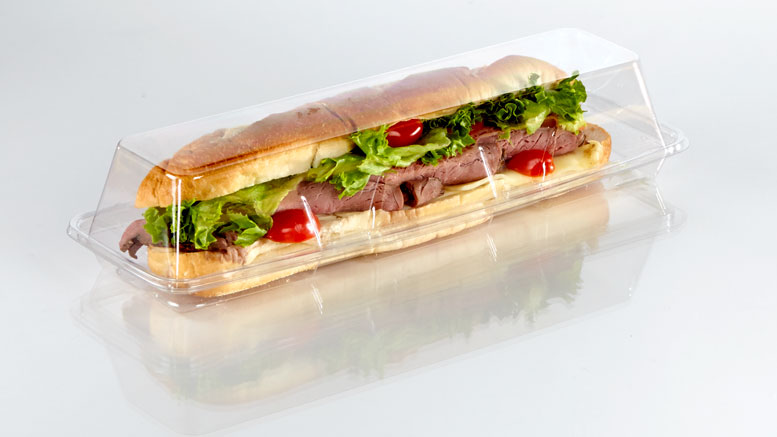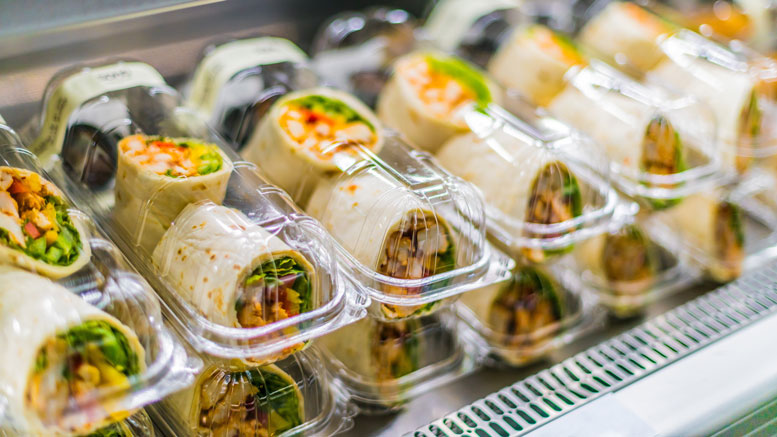The Sustainability Challenge at the Deli
January 10, 2024 | 6 min to read
As consumer interest in sustainability rises, delis must enhance their approach beyond green packaging. The U.S. Department of Agriculture reports that over one-third of food goes uneaten, stressing the need for delis to address food waste directly. Effective packaging should not only showcase products to accelerate sales but also minimize spoilage, while balancing the demand for sustainability. Thus, delis are urged to invest in solutions that reduce waste and support both profitability and environmental responsibility.
Green packaging alone is no longer enough.
More consumers than ever are interested in sustainability, which means the deli does well in using packaging that is either plant-based or made from recycled material.
It also means the deli needs to be part of the solution to the problem of large amounts of food thrown out rather than eaten.
“In the United States, over one-third of all available food goes uneaten through loss or waste,” according to the U.S Department of Agriculture (USDA) 2023 study: The Impact of Food Waste. The study says, “When food is tossed aside, so too are opportunities for improved food security, economic growth and environmental prosperity. USDA is uniquely positioned to help address the problem of food loss and waste through its programs, policies, and guidance.”
The USDA believes reducing food waste can be a money-making proposition. “Businesses that reduce food loss and waste can help feed families in need and reduce the environmental burden of wasted food,” according to the USDA study. “They can also improve their bottom line. Many businesses achieve positive returns by reducing food loss and waste.”
For the retail deli, the challenge is to package and display products in a way that minimizes the amount of food that goes bad on store shelves, or in the refrigerator after consumers take it home.
PACKAGING MUST HELP MOVE PRODUCT
Packaging must display the products well enough to move them off the shelf quickly and protect them from spoilage after purchase, which means only tight-closing, clear, hard plastic will do. But the deli must also respond to a growing number of environmentally oriented consumers who are concerned about plastic pollution.

“From purely a packaging perspective, as there are many food influencers certainly, they should choose packaging that merchandises the food well. Visual appeal will increase sales, of course, and therefore reduce shrink. Obviously, you also want packaging that optimizes shelf life,” says Kevin Soares, marketing manager at Lacerta, Mansfield, MA. “The deli should stay informed about changing consumer preferences, especially in these inflationary times. Deli has benefited from being used by consumers as an alternative to restaurant occasions — they are using the deli as an accompaniment to a home-cooked meal or as an entire meal. With that, they need to understand what the consumer is looking for.”
Lacerta designs, engineers, thermoforms and prints custom PET packaging. Headquartered in Mansfield, MA, the company operates seven facilities in the U.S.: four in Mansfield; one in Chatsworth, CA; one in Attleboro, MA; and one in Portage, WI.
The 2023 USDA study on food waste references a 2017 report: The Business Case for Reducing Food Loss and Waste, which concludes that food waste reduction programs show a positive return on investment.
“A review of 1,200 business sites across 700 companies in 17 countries found that nearly every site evaluated achieved a positive return, with half seeing a 14-fold or greater return on investment,” according to that 2017 report. “In the UK, the only nation we could find with full financial cost-benefit data available, findings show that for every £1 ($1.25) invested in efforts to curb avoidable household food waste, households and local authorities saved £250 ($309). This report also presents data from the city of London.”

Lacerta has a line of packaging that simplifies the process of keeping food sealed tight against spoilage but is also highly visible for merchandising purposes.
“With Fresh N’ Sealed tamper-resistant, tamper-evident packaging, you get a refreshingly simple and streamlined design,” according to the Lacerta website. “No shrink bands. No film sealing. No added costs or complexities. Just a pure and simple design that preserves freshness and helps your product shine on the shelf.”
Fresh N’ Sealed packages are available in rectangular and circular shapes, and some have compartments to hold complementary items. These attractive, but functional, packages are available in a variety of sizes and shapes.
SUSTAINABILITY SELLS
Soares advises working with your package maker to come up with designs that fit the deli’s merchandising needs and sustainability goals.
“Again, from a packaging perspective, the deli should be aligning and consulting with packaging suppliers that can help them achieve their sustainability goals,” he says.
“Suppliers can also provide thought leadership that brands and retailers can use to educate consumers about packaging and to debunk myths that have confused consumers about which substrates are least impactful on the environment. Unlike single-use alternatives, PET is designed to be remade. When recycled, it can have less environmental impact than other substrates like glass and even paper,” Soares says.
There is a place for plastic packaging in the he adds. “We are excited about engaging in deeper ways with brands and retailers to assist them with their sustainability goals. We will continue to share our thought leadership to help them make the best-informed choices for their packaging.”

A recent McKinsey & Co. report concludes that products and processes that can lay claim to sustainability have a significant advantage in the marketplace.“We know from the McKinsey study that products making environmental, social, and governance claims averaged 28% cumulative growth over the five-year period, versus 20% for products that made no such claims,” says Soares.
The simplest steps to reduce food waste can be communicated to resonate with a growing number of consumers.
“When your consumers know you care about the environment and see you demonstrate that care, they feel aligned with you and are likely to remain loyal,” says Soares. “The same is true for employees. Retention is a huge challenge these days. People want to work for companies that have a conscience and practice their values, whether related to sustainability or other concerns like social performance. Operating sustainably helps on many levels. Of course, a healthier planet benefits everyone.”
Part of the challenge of achieving sustainability in the deli is developing effective strategies for communicating these efforts to consumers.
“There are a number of ways to merchandise sustainability to include at the point of purchase through signage or even on packages,” says Soares. “The messaging can also be conveyed in socials and advertising. I don’t think you see too much of this type of messaging and, again, this is a void that a good, informed supplier can help fill. There is vast material to share with brands and retailers that would resonate with consumers to educate them about choices and sustainability issues generally.”
Since COVID-19, many consumers prefer products in packages that guard against contamination. That raises the added challenge of explaining to customers what happens to all that plastic after it is used.
“Since 1993, our goal has been to create innovative solutions so that our customers can have high-quality packaging they can trust,” says Soares. “But we want to give you more, which is why we’ve tacked on a new goal: to make 100% of our products include up to 100% of recycled, recyclable materials by 2025.”
So far, the company’s reuse of plastic annually saves the equivalent of taking 1,078 cars off the road.
There has been increased retailer use of plant-based compostable packaging that eliminates the problem of plastic pollution. Madison, WI-based Placon uses its own facility to turn recycled plastic beverage bottles into the material it uses to make plastic packaging.
Like Lacerta, Placon works with retailer customers to design and produce custom packaging that gets the job done most efficiently and sustainably. Compostable or post-consumer PET packaging is part of the answer forward-looking producers and retailers are giving consumers who are concerned about climate change.
73 of 76 article in DeliBusiness Winter 2023-2024

